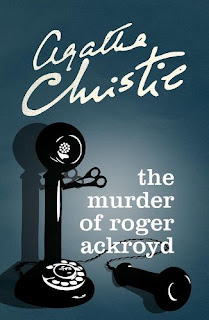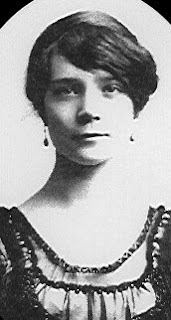A classic mystery novel set in and around the Northern Line
 |
| The British Library Crime Classics edition of Murder Underground |
Murder Underground, the first detective novel by Mavis Doriel Hay, is underpinned by a very clever plot. It has a satisfying ending and enjoyable resolution scenes that wrap up the individual stories of the characters and I found it to be a very good read.
First published in 1934, during the Golden Age of British crime fiction, the setting for this classic mystery novel is the Northern Line of the underground in London.
When Miss Pongleton, who is considered by others to be a tiresome old spinster, is found murdered on the stairs at Belsize Park Station, her fellow boarders at the Frampton Hotel are not exactly overwhelmed by grief, but they all have their theories about the identity of her murderer.
They help to unravel the mystery of who killed ‘Pongle’ with the help of Tuppy the terrier, the victim’s dog, and each play their part in the events that lead to the dramatic conclusion.
There is of course an official police investigation, led by Inspector Caird, but he is in the background for most of the story and it is the amateur sleuths at the Frampton Hotel who unearth the clues and finally make sense of the different pieces of the puzzle.
Hay was born in February 1894 in Potters Bar in Middlesex. She attended St Hilda’s College in Oxford from 1913 to 1916. She published three mystery novels within three years in the 1930s, Murder Underground, Death on the Cherwell and The Santa Klaus Murder. Her second novel, Death on the Cherwell, appeared during the same year as Gaudy Night by Dorothy L Sayers and coincidentally both novels were set in women’s colleges in Oxford.
After Murder Underground was published, Dorothy L Sayers wrote a review in the Sunday Times in 1934, saying: ‘This detective novel is much more than interesting. The numerous characters are well differentiated, and include one of the most feckless, exasperating, and lifelike literary men that ever confused a trail.’
Like Dorothy L Sayers, Mavis attended Oxford before women were allowed to graduate. She was interested in the industries and handicrafts of rural Britain and, after leaving university, she was sponsored by the Agricultural Economics Research Institute of Oxford University to collaborate with Helen Fitzrandolph on a series of works surveying the rural industries. Mavis was also interested in quilting and published several books on crafts.
She married Helen Fitzrandolph’s brother, Archibald Menzies Fitzrandolph, in 1929. He was killed in a flying accident during World War II. Mavis Doriel Hay died in 1979 at the age of 85.
Eighty years after it was first published, Murder Underground was republished by British Library Crime Classics in 2014. In his introduction to the new edition of the novel, crime writer Stephen Booth said that Mavis Doriel Hay had been ‘unjustifiably overlooked.’ He also bemoaned the fact that her third detective novel, The Santa Klaus Murder, published in 1936, was sadly her last, and wondered whether the approach of World War II was the reason for this.
I am sure that lovers of classic crime novels will be glad to have the opportunity to get to know this author now. I have to admit that I found Murder Underground to be a slow starter, but I kept in mind the fact that it was Mavis’s first novel.
I thought she was better at portraying the female characters, such as Beryl, Betty and Cissie, than the leading males, such as the hapless Basil, who was referred to by Dorothy L Sayers in her review, or Beryl’s amiable, but ineffectual, fiancé, Gerry.
Nevertheless, I would recommend Murder Underground to other readers as an excellent example of a whodunit.
















